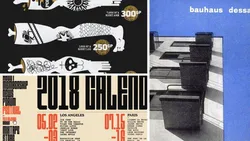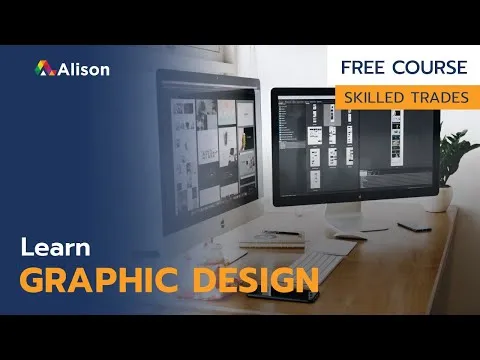
Graphic Design Foundations: Layout and Composition 
Graphic design is an art form that requires a strong understanding of layout and composition. This course teaches the fundamentals of layout and composition, helping designers create stronger, clearer, and more attention-grabbing designs. Learn how to use the principles of design to create effective layouts, how to use typography to create visual hierarchy, and how to use color to create contrast and emphasis. With this knowledge, you'll be able to create designs that stand out from the crowd. ▼
ADVERTISEMENT
Course Feature
![]() Cost:
Cost:
Free Trial
![]() Provider:
Provider:
LinkedIn Learning
![]() Certificate:
Certificate:
Paid Certification
![]() Language:
Language:
English
![]() Start Date:
Start Date:
On-Demand
Course Overview
❗The content presented here is sourced directly from LinkedIn Learning platform. For comprehensive course details, including enrollment information, simply click on the 'Go to class' link on our website.
Updated in [July 05th, 2023]
This course, Graphic Design Foundations: Layout and Composition, provides an introduction to the fundamentals of graphic design. Students will learn how to create stronger, clearer, and more attention-grabbing designs by understanding the how, why, and when of layout and composition. Through lectures, demonstrations, and hands-on activities, students will explore the principles of design, including balance, contrast, emphasis, movement, rhythm, and unity. They will also learn how to use typography, color, and imagery to create effective designs. By the end of the course, students will have the skills and knowledge to create visually appealing designs that communicate their message effectively.
[Application]
After completing this course, students should be able to apply the principles of layout and composition to their own graphic design projects. They should be able to create designs that are visually appealing, organized, and effective in conveying the desired message. Additionally, students should be able to identify and use the various elements of design, such as color, typography, and imagery, to create a cohesive and impactful design.
[Career Path]
One job position path that is recommended for learners of this course is a Graphic Designer. Graphic Designers are responsible for creating visual concepts, using computer software or by hand, to communicate ideas that inspire, inform, and captivate consumers. They develop the overall layout and production design for various applications such as advertisements, brochures, magazines, and corporate reports.
Graphic Designers must have a strong understanding of composition, color theory, typography, and design principles. They must also be able to work with a variety of media, including digital, print, and video. They must be able to work independently and collaboratively with other designers, art directors, and clients.
The development trend for Graphic Designers is to become more specialized in a particular area, such as web design, motion graphics, or 3D design. As technology advances, Graphic Designers must stay up-to-date on the latest software and tools to remain competitive in the job market. Additionally, Graphic Designers must be able to work with clients to understand their needs and create designs that meet their objectives.
[Education Path]
The recommended educational path for learners of Graphic Design Foundations: Layout and Composition is to pursue a Bachelor of Fine Arts (BFA) in Graphic Design. This degree program typically takes four years to complete and provides students with a comprehensive understanding of the principles and techniques of graphic design. Students will learn how to create effective visual communication through the use of typography, color, imagery, and layout. They will also gain an understanding of the history and theory of graphic design, as well as the fundamentals of digital design.
The development trend of the BFA in Graphic Design is to focus on the use of digital tools and technologies. This includes the use of software such as Adobe Photoshop, Illustrator, and InDesign, as well as the use of web design tools such as HTML and CSS. Students will also learn how to create interactive designs for websites, mobile apps, and other digital platforms. Additionally, they will gain an understanding of the principles of user experience design and how to create effective user interfaces.
Course Provider

Provider LinkedIn Learning's Stats at AZClass
Discussion and Reviews
0.0 (Based on 0 reviews)
Explore Similar Online Courses

Character Illustration: Drawing Faces Figures & Clothing

Color Trends

Python for Informatics: Exploring Information

Social Network Analysis

Introduction to Systematic Review and Meta-Analysis

The Analytics Edge

DCO042 - Python For Informatics

Causal Diagrams: Draw Your Assumptions Before Your Conclusions

Whole genome sequencing of bacterial genomes - tools and applications

Complete Graphic Design Course Explaining Psychology (MUST KNOW)

Graphic Design Tutorial For Beginners Graphic Design (Full Course)


Start your review of Graphic Design Foundations: Layout and Composition